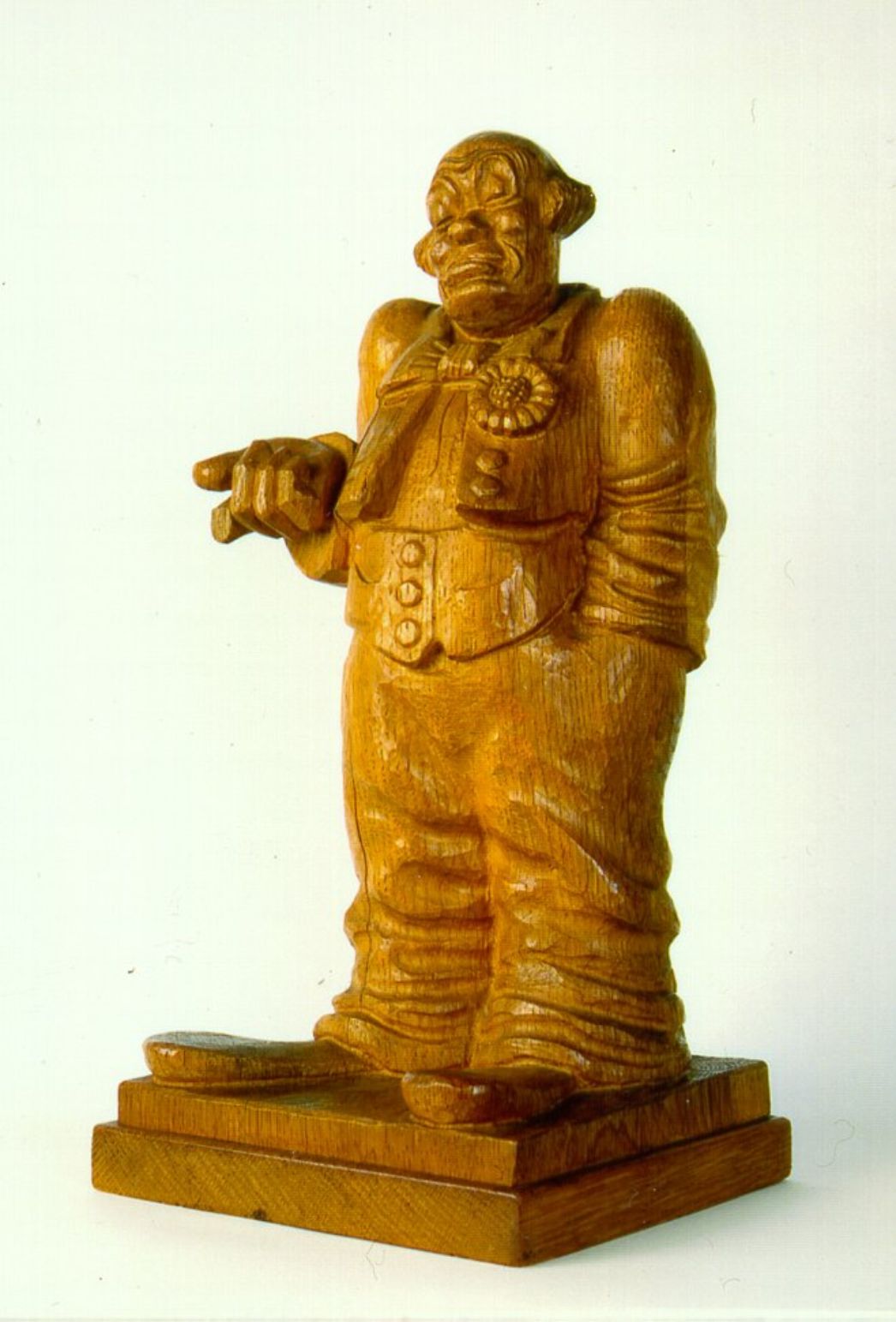
The figure of a clown carved by Bruno Apitz in the Buchenwald concentration camp in 1943 bears no apparent connection to the novel he wrote later, entitled Naked Among Wolves. Chronologically, more than a decade separated the little wooden figure made in the terror of the camp and the classic novel of the German Democratic Republic. Whereas the novel heroized the Communist resistance, the clown stood for an aspect of the camp history which has hitherto gone largely unnoticed: the inmate’s attempt to save himself by donning the costume of a clown. Apitz stressed that he had carved his figure of a clown of his own accord. It was not a commission that prompted him to do it, but essentially the dichotomous nature of his situation as a camp sculptor for the SS.
The multitalented Apitz—he was an actor, writer, poet, musician, and woodcarver—sought himself in the figure. He himself was the clown, whose lot it was to entertain the masters through his own suffering. An inmate serving the SS as an artist—“we were luxury slaves”—survived the terror of the concentration camp because he adapted to the camp conditions with his art and catered to the wishes of those in power while at the same time imbuing his art with a spirit of resistance. The clown figure is a compelling symbol of this situation.
Yet apart from a few allusions, this aspect of Bruno Apitz’s camp experiences was not in the public focus in the German Democratic Republic. After all, it fit neither the mould of the concentration camp horrors nor that of the antifascist resistance. Apitz himself wrote about the significance and resistivity of his concentration camp art production: “We didn’t only sculpt wood; people also painted, made music, composed, wrote in the camp, for the most part secretly, illegally. What was it if not a self-liberation of the human being, an affirmation of one’s own humanness? Because: they could shave our heads, they could take away our names and give us numbers instead, but they couldn’t kill the human beings inside us. More or less well-wrought artistic activity was a necessity because we had to create a counterweight within ourselves against the misery and hardship and hunger in the camp.”
Biography
Bruno Apitz was born in Leipzig on 28 April 1900, the twelfth child of a working-class family, and attended primary school. At the age of fourteen he began an apprenticeship as a punch cutter. In 1918 he participated in the November Revolution in Leipzig. He worked intermittently for a book wholesaler. In 1927 he joined the Communist Party of Germany (KPD), wrote for agitprop theatre companies, and was a performer himself. He became a member of the Association of Proletarian Revolutionary Authors and in 1930 chairman of the association’s Leipzig chapter. In 1933 he joined the KPD resistance against the Nazi regime. The same year he was committed first to the Colditz, then the Sachsenburg concentration camp. Not long after his release he was arrested again and imprisoned in the Waldheim prison before being committed to the Buchenwald concentration camp in November 1937.
After his liberation from Buchenwald on 11 April 1945, Bruno Apitz worked in various functions, among others as administrative director of the municipal theatre of Leipzig, and wrote screen and radio plays. His novel Nackt unter Wölfen came out in 1958. It was translated into more than thirty languages and produced first as a television film and later, at DEFA, for the cinema. Bruno Apitz died in Berlin on 7 April 1979.


